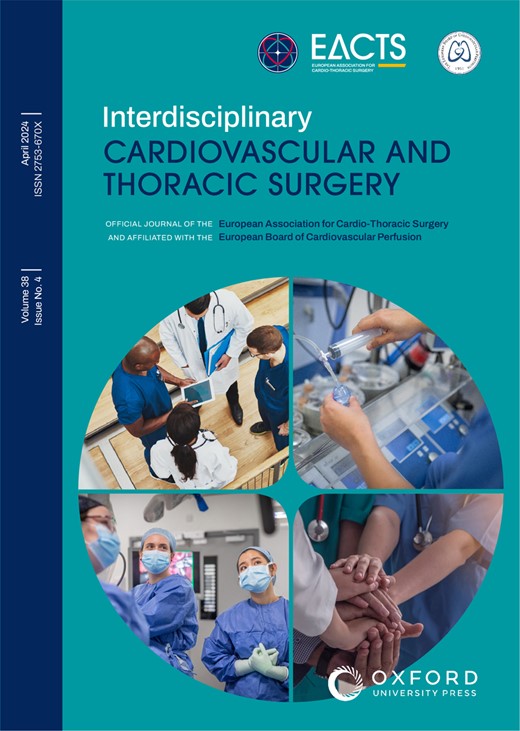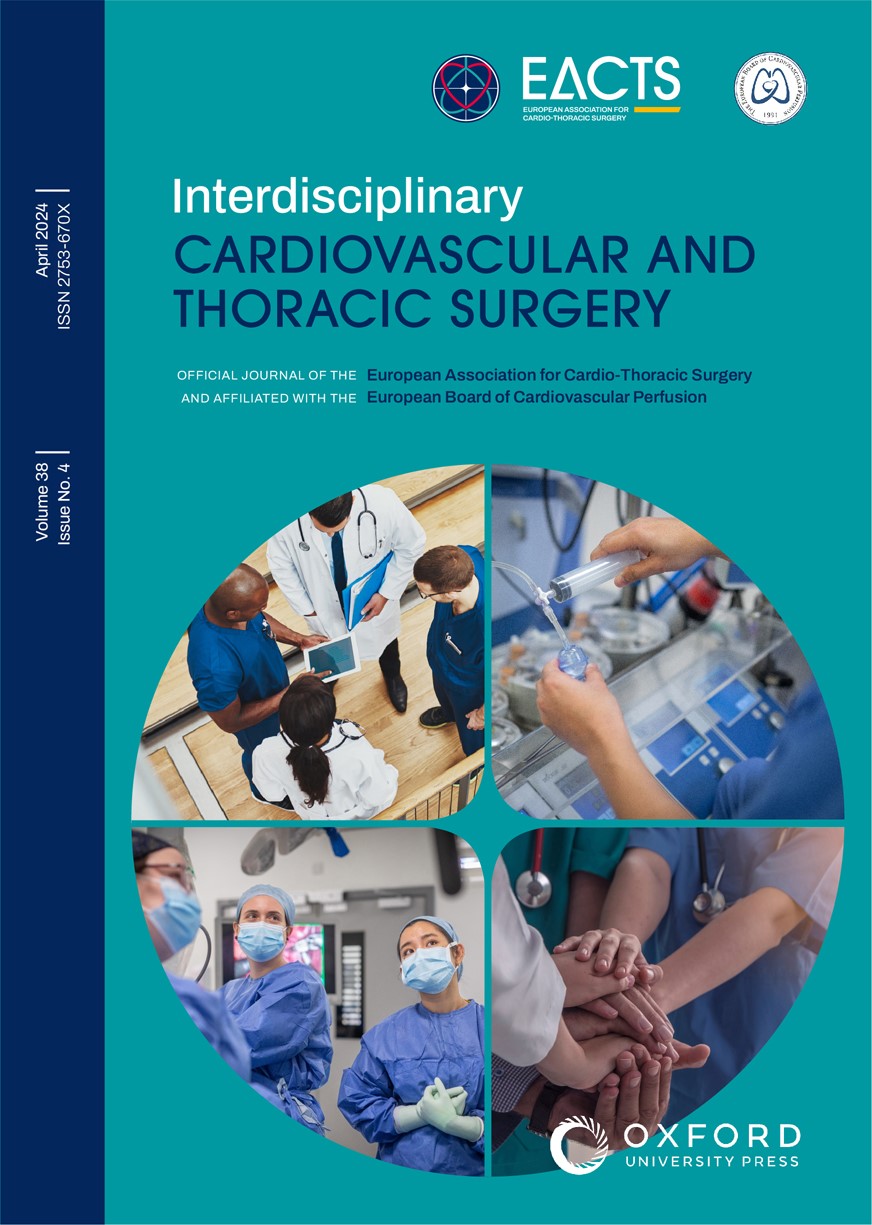Volume 38, Issue 4, April 2024
Congenital Disease
Original article
Risk of infective endocarditis after hybrid melody mitral valve replacement in infants: the French experience
Surgical management of mitral valve (MV) disease is challenging in infants, and options for mitral valve replacement (MVR) are limited in infants with irreparable mitral valve, especially for mitral annular size <15 mm [1].
Dielectric elastomer actuator-based valveless pump as Fontan failure assist device: introduction and preliminary study
The Fontan procedure [1, 2], introduced over 50 years ago, represents a landmark surgical intervention designed to address the unique challenges of single ventricle congenital heart defects (CHDs).
Cleft closure and other predictors of contemporary outcomes after atrioventricular canal repair in patients with parachute left atrioventricular valve
Repair of atrioventricular septal defects (AVSDs) is now routinely performed in infancy with good surgical outcomes and a low risk of reoperation [1–3].
Heart Failure
Original article
Temporary extracorporeal life support: single-centre experience with a new concept
Mechanical circulatory support (MCS) has been used for the treatment of cardiogenic shock (CS) since the early 1960s [1].
Alternative venous access sites for dual-lumen extracorporeal membrane oxygenation cannulation
Veno-venous (VV) extracorporeal membrane oxygenation (ECMO) support is an established treatment for patients suffering from severe respiratory failure [1].
Best Evidence Topic
In patients supported with peripheral veno-arterial extracorporeal membrane oxygenation, what factors are associated with the development of spinal cord ischaemia?
A best evidence topic was constructed according to a structured protocol.
Thoracic Non-oncology
Original article
Awake sternal fixation; comparison of technical details and early results with sternal fixation methods performed via general anaesthesia
Traumatic sternal fractures are seen in 8% of blunt thoracic trauma and 18% of multi-trauma cases [1, 2].
Results of an exploratory survey within ESTS membership in 2022 on current trend of robotic-assisted thoracic surgery and its training perspectives
Minimally invasive thoracic surgery (MITS) has developed since 1990s, initially with pleural procedures but slowly expanding to Video-assisted thoracoscopic surgery (VATS) anatomical lung resections.
Case report
Contralateral pneumothorax with postpneumonectomy syndrome: report of 18-year-old case
Overextension of a remaining lung with mediastinal shift after pneumonectomy, what is called, postpneumonectomy syndrome, can lead to severe respiratory symptoms such as persistent dyspnoea, haemoptysis and cyanosis.
Brief Communications
Three-dimensional printed pure-titanium implantation for chest wall reconstruction involving the sternum and ribs: a novel approach
Chest wall reconstruction (CWR) surgery is a necessary procedure for addressing a variety of conditions affecting the sternum, parasternal cartilage and ribs [1].
Valvular Heart Disease
Original article
One-year postprocedural quality of life following mitral valve surgery: data from The Netherlands Heart Registration
Severe mitral valve (MV) disease, comprising both mitral stenosis and mitral regurgitation, is associated with a reduced life expectancy, significant morbidity and development of symptoms affecting daily life [1].
General Interest
Original article
Proposal of statistical twin as a transition to full digital twin technology for cardiovascular interventions
The guiding principle in the allocation of treatment for cardiovascular interventions is risk assessment, which is based primarily on the European System for Cardiac Operative Risk Evaluation (EuroSCORE) and the Society of Thoracic Surgeons (STS) score [1, 2].
Coronary Disease
Original article
Randomized comparison of HARVesting the Left Internal Thoracic Artery in a skeletonized versus pedicled technique: the HARVITA trial—study protocol
Vascular Disease
Original article
Acute type A aortic dissection features and outcomes in octogenarians: a propensity score analysis
Acute type A aortic dissection (ATAAD) is a severe life-threatening aortic condition that requires emergency surgical repair [1].
Impact of intraoperative haemoadsorption on outcomes of patients undergoing aortic surgery: a single-centre, prospective, observational study
Cardio-surgical procedures using cardiopulmonary bypass (CPB) can induce a systemic inflammatory response syndrome due to activation of inflammatory cascades.
Mid-term outcomes of physician-modified endograft therapy for complex aortic aneurysms
Endovascular aortic repair (EVAR) or thoracic endovascular aortic repair (TEVAR) has become a widely accepted treatment option for aortic aneurysms [1–2].
Double-branched stent graft and four-stage deployment in total arch repair: safety and feasibility evaluation in porcine models
Aortic diseases, particularly type A acute aortic dissection, are recognized as life-threatening cardiovascular emergencies.
Case report
Repeated endovascular approaches achieve successful complete remodelling for type IIIb acute aortic dissection
In recent years, thoracic endovascular repair (TEVAR) has been performed for Stanford type B aortic dissection.
Residents' Corner
Meta-analysis
Thorax support vest to prevent sternal wound infections in cardiac surgery patients—a systematic review and meta-analysis
Currently, midline sternotomy is a widespread method for direct thorax access [1], and despite advancements in minimally invasive surgery, the majority of complex cardiac procedures are performed through midline sternotomy.





